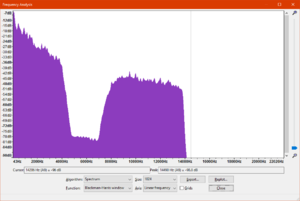No, I have no document. I wish I did. I am trying to put the puzzle together by reading different sources on this. The authors were not too specific about the filtering protocol
That's a bit of a strange thing to say because you go on quoting the specification of the filtering protocol right after that statement...
I was taught in early school years that one of the criteria for a scientific experiment is that it needs to be reproducible by others. In other words it needs to be very well documented. It seems to me the authors did not give much weight in describing the filtering protocol. It's as if they just assume that it would be understood by reading the few lines above.
I have a feeling that you are having trouble because you may be lacking expertise in signal processing to understand the specification (I don't question your smartness or aptitude - nobody is expected to know everything about everything).
For example, your question:
What do you mean by "150 order"? You mean -150 dB?
...shows some confusion about what an order is. You can look it up here. One way to think about the order is the "steepness" of the filter.
Lastly, I'm not sure it matters so much whether you attenuate some frequency band by 100 dB or 150 dB: at those high attenuation numbers, your signal becomes drowned by the rest of the noise around you ("noise" in the statistical sense, I don't mean that there is a lawn mower making noise next to you: right now if you go to a quiet place and hear nothing, that's the baseline noise I'm talking about).

 Member
Member Manager
Manager
